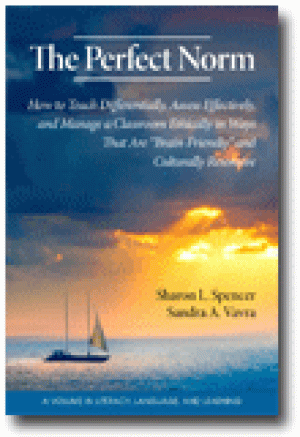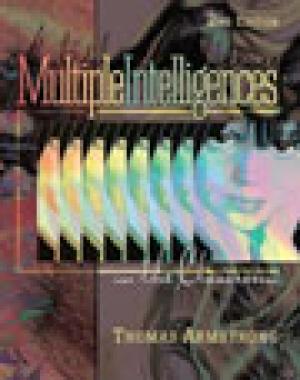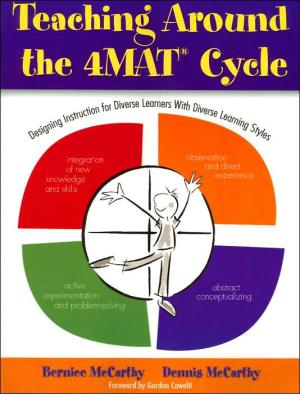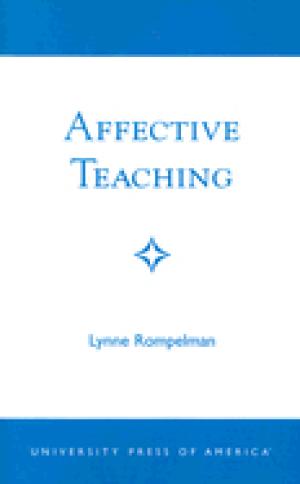Resources

Our goal in writing this book was to validate teachers for strong efforts in their life's work. We often observe teachers' frustrations with what they perceive to be a multitude of different hot topics in education that they must attend to now, but which they expect to come and go, like the last hot topics. So, we wanted to help readers see similarities between many of these hot topics-differentiation, multiple intelligences, culturally responsive teaching, brain-friendly strategies, authentic assessment, and ethical classroom management which we feel are not flashes in the pan. And we trust that serious practitioners will not oversimplify the findings of neuroscientists and their application to education. Reading studies and books by scientists, a number of which are user-friendly, can help ensure that teachers separate the hype from credible information. We have seen this professionally judicious approach in the work of graduate students (Kolinski, 2007) in adopting brain-friendly strategies. We have intentionally packed both theoretical/research-based and practical information in this book because professional educators want to know why they should use certain approaches, models, and strategies. In turn, as professionals, we should be able to explain why we teach the way we do-not to justify, but to educate others about our knowledge-based, reflective, decision-making processes and the impact on student learning. Thus, it is important to read Chapter 1 because it lays a foundation. Each succeeding chapter (2-6) has unique and compelling twists and turns-chock full of ideas to use or to adapt. It is possible to gain lots of ideas, processes, and strategies from reading and implementing (or adapting) even one of the unit chapters, or a part of it. While some of the units are explicitly about literacy, others focus on content using reading, writing, speaking, and listening as critical in the learning process. Thus, literacy skills are reinforced and strengthened. Additionally, some of our colleagues and public school partners have given us feedback that they wanted to implement some of the units and activities themselves. So, feel free to use this book for self-exploration and professional development. (From the Publisher)
The Human Timeline invites students to physically re-create biblical history. Each student holds a card that denotes an event randomly selected from the biblical timeline. They then arrange themselves chronologically to learn the correct flow of biblical history. Because of the movement involved and the arbitrary layout of the cards among their classmates, learners engage their spatial-kinesthetic intelligences through this activity. The exercise proves popular among students who identify themselves as "visual" learners, and ultimately serves the biblical studies classroom by reinforcing biblical history as a necessary framework for understanding the biblical text.

"To respect the many differences between people"--this is what Howard Gardner says is the purpose of learning about multiple intelligences (MI). Now, in the 2nd edition of "Multiple Intelligences in the Classroom," Thomas Armstrong has updated his best-selling practical guide for educators, to incorporate new research from Gardner and others. Gardner's original studies suggested that the mind comprises seven intelligences--linguistic, logical-mathematical, spatial, bodily-kinesthetic, musical, interpersonal, and intrapersonal. This new edition includes information on the eighth intelligence (the naturalist), a chapter on a possible ninth intelligence (the existential), and updated information and resources throughout the text to help educators at all levels apply MI theory to curriculum development, lesson planning, assessment, special education, cognitive skills, educational technology, career development, educational policy, and more. The book includes dozens of practical tips, strategies, and examples from real schools and districts--as well as solid outcomes of MI, including improved test scores and discipline. Armstrong provides tools, resources, and ideas that educators can immediately use to help students of all ages achieve their fullest potential in life. (From the Publisher)

From the Publisher Learning styles are linked to preferences in the ways people perceive and process experience. Bernice McCarthy's unique 4MAT cycle is a brain-based teaching method that emphasizes diverse learning styles, honors learner individuality, teaches concepts as well as facts, and improves student thinking and performance on traditional as well as high-stakes assessments. With 25+ years of field testing and field use supporting its effectiveness, the 4MAT method uses a 4-quadrant cycle of learning that begins by engaging learners through direct experience, moving them toward: Reflective observation, Abstract conceptualizing, Active experimentation and problem-solving, Integration of new knowledge and skills. Learning happens as we unite our experiences and their meaning with actions that test those meanings in the world. This exciting new resource offers schools a powerful tool to enhance teaching and learning for students with all learning styles, backgrounds, and preferences.
Student assignments and assessment – is there life beyond the ten-page essay? Drawing on the theory of multiple intelligences and experience with an assignment in which students were asked to address course content in anything but an essay, the author considers the challenges and virtues of a creative format that does not rely exclusively on linguistic intelligence. The process, presentations, and evaluative approach employed in an assignment that called upon student creativity in a "Women and the Bible" course are described, and pedagogical and practical considerations explored. The analysis of a particularly memorable student submission reveals layers of complexity seldom achieved in a conventional essay format.
Describes a new taxonomy of liberal and professional learning--a Table of Learning--that creates a system for classifying the kinds of learning faculty seek for their students, and also serves as a stimulus for the design and evaluation of education.
Looks at some of the role cultural context plays in developing and using various teaching and learning styles. Re-print of chapter 7 of “Teaching, Testing, and Measuring Intelligence” (University of Wisconsin Press).

In Affective Teaching, Lynne Rompelman extends the research on the affective domain by incorporating students' and teachers' voices regarding the nature of caring of teachers within an academic setting. (From the Publisher)
An overview of the research on “universal design,” which aims to design instruction to maximize the learning of students from a wide variety of ethnic and racial backgrounds, English language skills, learning styles, and disabilities.